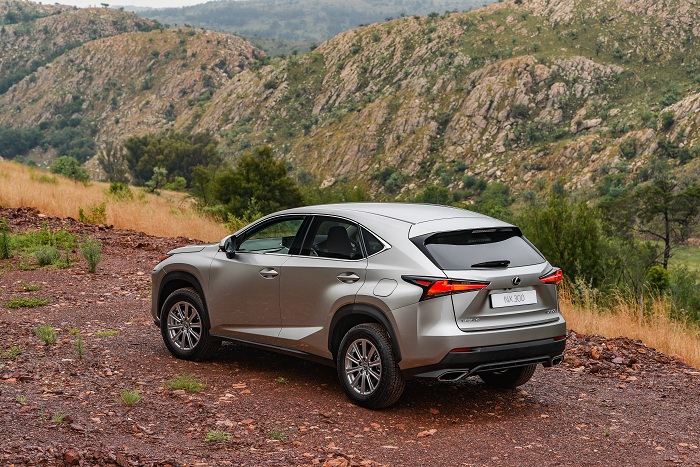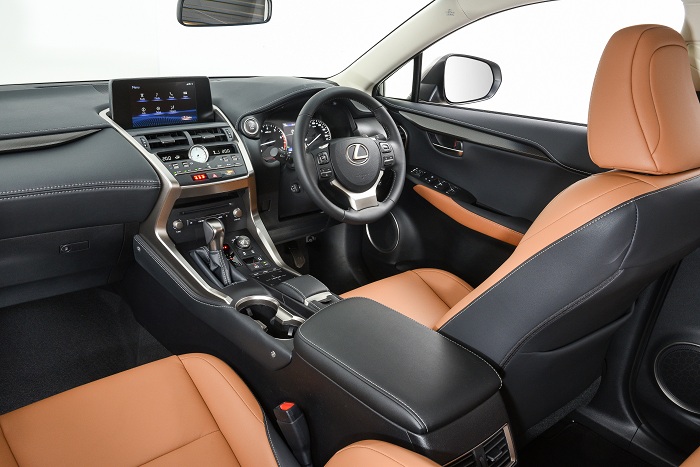Unlike many German cars which feature ‘safe’ or ‘subtle’ styling features, Lexus tends to build cars that are striking in design. Sharp lines, edges and bold features define their cars, yet some observers deem them to look a trifle busy.
Small but sharper looks
So what’s new on the NX? Well, when I saw the car for the first time, I noticed the new bumpers and headlights, the same expansive spindle grille as the LC, new taillights and redesigned tailgate. At the launch, Lexus offered me the opportunity to sample the F-Sport model.

Being the top-spec variant in the NX range, it gets extra aesthetic touches, namely a black grille frame with the grille itself getting a black mesh design, brushed aluminium lower apron and side vents finished in graphite complete with F-Sport badging. It also gets bigger, sportier alloy wheels and looks more aggressive than before.
Interior mildly tweaked
Moving onto the interior, the subtle changes continue. Apart from the bigger infotainment screen, now measuring 10.3-inches and a new centre clock, not much has changed. The layout is typical Lexus and on the F-Sport model, drivers can expect to find some sporty trim options to match the exterior.

One thing that did annoy me though was the control unit for the infotainment system. Lexus has finally done away with its mouse-like toggle controller, yet replaced it with a touchpad. It takes some time getting used to and does distract somewhat when you try aim for the desired menu. I suspect a conventional rotary dial would have worked far better.
Ride revised
A number of changes have also taken place underneath the skin, such as a new rear stabiliser-bar, enhanced front dampers, updated shock absorbers and Lexus’ Adaptive Variable Suspension. The car most definitely feels more compliant, although the F-Sport with its big wheels exhibited a harder ride than the non-sporting derivatives.
New name but engine unchanged
The biggest change to the NX however is its name. Known previously as the NX200t, the new model has now been dubbed NX300, yet it still comes powered by the same 2.0-litre turbocharged petrol engine I first experienced in the IS200t, that produces 175kW/350Nm. It’s a great engine and one that the Japanese car maker needed as they delayed their implementation of turbocharging.
All models are again fitted with a six-speed automatic gearbox, although the entry-level E variant is now front-wheel drive instead of being all-wheel drive like the mid-range EX and F-Sport.
The engine is eager and thanks to the inclusionof various driving modes, you can choose betweenEco, Normal or Sport. The F-Sport also gets anadditional Sport+ mode for even sharper throttleresponse and better handling.
For those keen on being green, the NX rangealso includes a hybrid model in the NX300h, whose2.5-litre petrol-electric drivetrain develops 150kW,sent to all four wheels via a CVT transmission.
Conclusion
Overall the new Lexus NX, which makes up around 29% of Lexus sales in South Africa, remains an attractive alternative to the somewhat clinical offerings from Germany.
Pricing
NX300 E - R599 900
NX300 EX - R677 300
NX300h EX - R746 700
NX300 F-Sport - R789 700
















